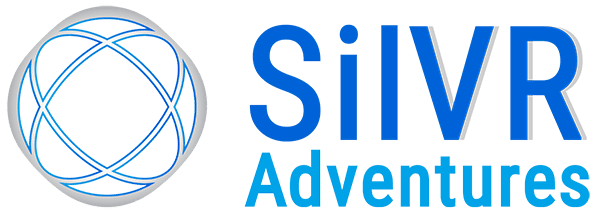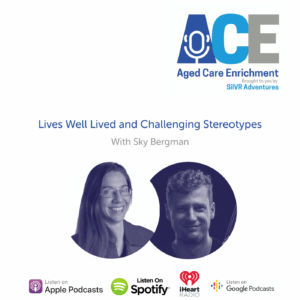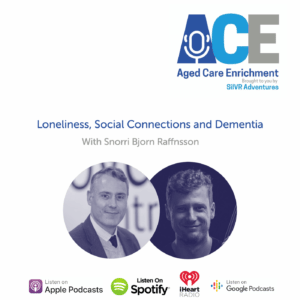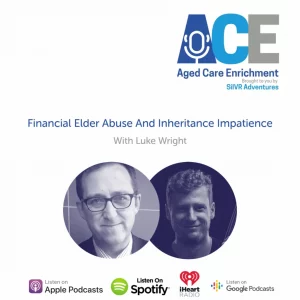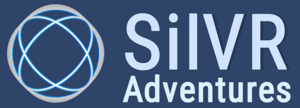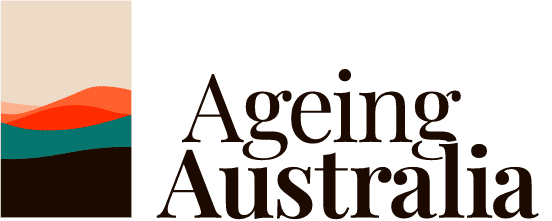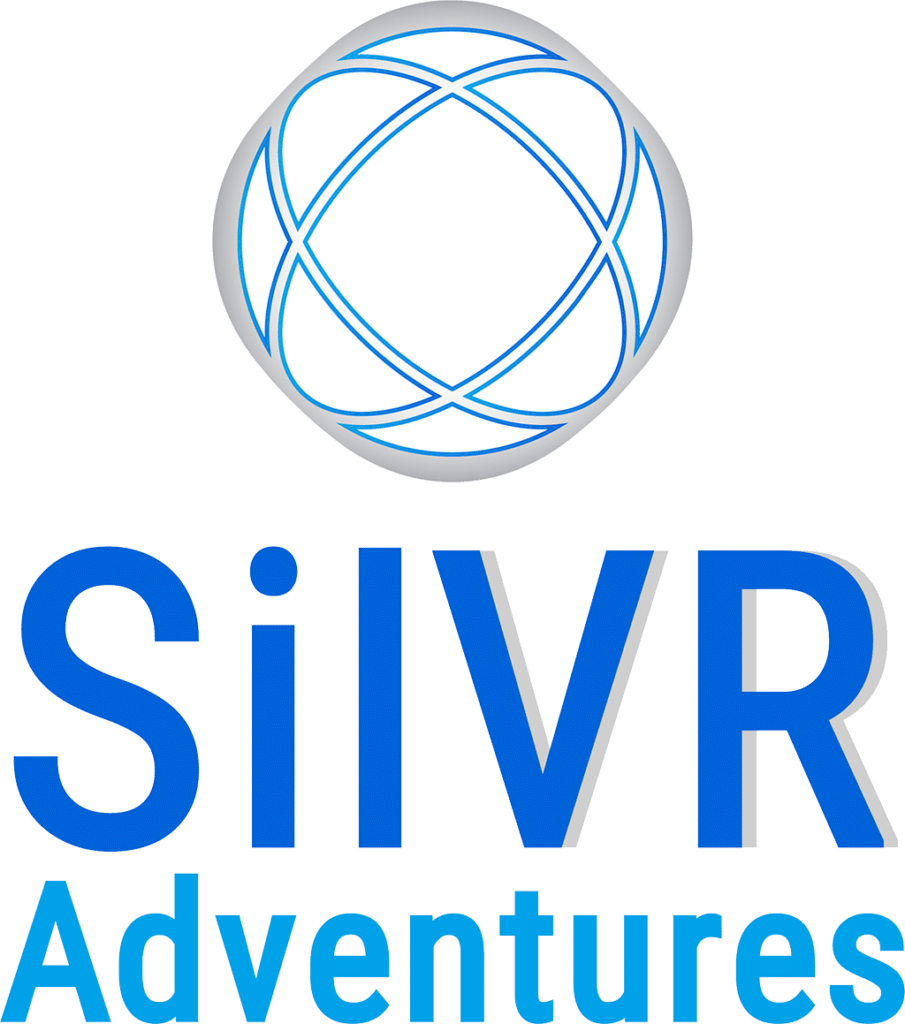Jon Warner has over 25 years experience working in the ageing space, and this most recent phase of his career has focussed on helping new companies develop and launch their products for the over 65 market.
Amongst many board engagements throughout the industry, Jon leads Silver Moonshots, a startup accelerator that helps prepare companies that serve older adults towards investment and growth.
This conversation was all about how all those new products you’re seeing for older adults get made, what makes them successful and how care providers can get early and discounted access with pilot programs.
Transcript
Ash de Neef: Alright John, thank you so much for joining us on the podcast today.
Jon Warner: Nice to be here Ash.
Ash de Neef: Absolutely great to have you. And just before we started recording, we were talking about many different countries you’ve lived in. Sounds like you’ve clocked over a decade and a bunch of different countries. Can you give us your travel itinerary for the last 30 years?
Jon Warner: Yeah. So boy, I’ll go back further than that. My father was in construction, so he used to drag me, both around the UK where I was born, but then he started getting gigs overseas. So I lived in the middle east for a while, in Jordan initially, and then in Saudi Arabia. But then since that I’ll have my own travel itinerary so I’ve actually lived in several other places.
I did a bit of time in Singapore. I lived in Australia for 15 years and I’ve been here in the states for the last 17. So those have all been places that I’ve lived for a reasonably extensive amount of time. I think I’ve clocked 104 countries out of 199 on the planet as well. So I’m pretty well traveled.
Ash de Neef: Yeah it’s pretty good effort. And uh, some of our listeners might know you from your work in the digital health or ageing space, but was that always the case? The work you were doing was in that space?
Jon Warner: Not at all. I actually had a long corporate career when I was in the process industries. Mainly I worked for an American company called Air Products and Chemicals for several years, and then I went on to work for Exxon. I was climbing that greasy pole for a number of years and really didn’t see anywhere to go and went off into the world of management consulting, and that’s what got me to healthcare.
At the time it wasn’t anything to do with healthcare. We were all about efficiency and effectiveness in organisations, and my first three clients were all healthcare. I worked for a biotech company, then a pharma company and then a large hospital system. And the rest as they say is history because I’ve been pretty much in health care for the last 26 years now.
And then slowly I’ve started working with more startup oriented companies, certainly the last decade or so. It’s less large corporate systems and much more agile entities that are trying to be disruptive of healthcare. Which is much needed in the United States where we need a lot of change and we certainly need to reduce costs because we’re at least twice, if not three times more expensive to rent the care in this country than anywhere else in the world,
Ash de Neef: Wow. So, So what was it that kept you in the healthcare space?
Jon Warner: It’s a huge sector, multifaceted sector. And I think it’s endlessly interesting in terms of how to render something as basic as good care is an extremely complex problem to solve. So I think it just represents a huge amount of challenge to every level. Particularly when you’re trying to deploy any kind of innovation or technology to what is a very old system.
I mean in many ways, parts of healthcare being rendered in pretty much the same way for a hundred years. So it’s very much in need of change. So you have to balance that kind of old system that slow and recalcitrant to change with a lot of modern opportunities to offer that change. And that’s the balance and that’s what keeps me endlessly interested.
Ash de Neef: Yeah, fantastic. And I guess something that you’re involved with quite heavily, as you mentioned there, is startups and bringing new companies into a wider market . For our audience who are mainly working with the aged care industry, I thought it might be interesting to dive into the process through which new products arrive on the market, new services. And the different ways in which an idea can be developed and then be brought to the consumers.
Could you run us through a basic overview of that and how your work fits?
Jon Warner: Sure, and that’s a complex question because products are brought to market in a number of different ways. And the first way is almost accidentally in as much as products are developed often for much younger audiences than older adults, and then are either not adapted at all or adapted in minor ways for the older adult market. Which of course creates a problem because your end-user isn’t necessarily the target that you were researching when you evolved the product in the first place.
And this is true – the larger the company gets, the more this is often true. And there’s any wonder that those products don’t necessarily do everything they can do. I think it’s a little different in the startup world.
I think again, you can bifurcate that into two halves. You’ve got startups that are run by people that either themselves are older adults or more often they’re younger people that have got parents or grandparents that they can see have got unmet needs. And they often will be able to think of innovation or technology solutions that might help not situation.
And they’ll bring that idea hopefully into some customer discovery to a wider level than, you know, just their family members. So they can evolve it maybe build a piece of software or build a device or whatever it might be that helps.
My role in that process in general is a couple of fold. I run an accelerator. That’s entirely focused on the older adult marketplace. So the thematically we focus on the 50+ population and that’s what Silver Moonshots my organization does. We bring six companies into a cohort every quarter that have the older adult market as a target and try and help them craft a solution that’s going to work in the target segment. They want to start with. So that’s one way. And in fact, we’re not the only accelerator that’s around, whether it’s, in Australia or elsewhere in the world, you can join the accelerator.
But we’re one of the very few that has a mentor team that is deeply embedded in how the older adult marketplace works, and indeed have different parts of that very big sector thinks and operates. I’m very much into ensuring you’ve done deep research, deep customer discovery in the older adult marketplace, because it’s not one big pejorative whole.
We’ve got north of 60 million people who are 65 and older in the US and that’s, that’s a giant population of people. And you can’t say that market is one single marketplace and any more than you can in the other markets. So, that’s how we play the role with Silver Moonshots.
Ash de Neef: Yeah, that’s great. So take, for example, I have an idea that I’m going to develop a new wearable. That’s going to be exclusively to people over 65 and it’s going to have health benefits, but it’s also a lifestyle sort of product. How would it, what’s the process of getting it from my bedroom, thinking of the idea to on the wrists of people out in the wider.
Jon Warner: Yeah. I would say go back to customer discovery. And let me just distinguish that for you. A lot of people think the next step is a bit of market research. The problem I have with that is that you start then with the product. I can hold up a pen, and say I’ve just invented a new pen. And as soon as I hold it up, especially close to the camera I’m forcing you to focus on this product and tell me what you think about.
I think the first step is actually not to mention your product at all. It’s actually to discover the problem you’re trying to solve for. So my question of you would be Ash if this is real would be what problem you’re trying to solve with your wearable. I mean why even a wearable right? Is it you’re trying to moderate monitor blood pressure?
Is it that you’re trying to locate someone. Is it that they’re lost and they want to be found is that they want to socialize in some way. Is it an anti-loneliness device? What is it that you’re trying to solve before you’ve even mentioned the product? And I think that means you’re going to find nuances in terms of how people feel, think, and identify the problem, that might have a bearing in terms of what you then design in a design thinking sense.
It might be a wearable, but it might not be. So rather than sort of a build it and they will come approach, which is like “I built this wearable, and it’s a nice watch that I wear” or a Fitbit or whatever it might be. You’re going to spend quite a bit of money building that, or at least building a prototype version of it. Maybe you’re going to build a website to find that actually no one wants to wear your wearable. It’s just doesn’t solve the problem that they’ve got.
So I think the beginnings of the journey are, get out and talk to as many older adults you can in the target sector where you want to focus this. So again, let me just illustrate you can’t be pejorative about the old community. So would your wearable be worn by the older and frailer end of that continuum, you know, people we’ll say in their eighties as opposed to people in their sixties? Because boy, those are completely different marketplaces.
Funnily enough, the people in their eighties might be more willing to wear a wearable, but maybe on their wrist, not anywhere else. Maybe the younger end of that is prepared to wear something in another part of that body. So you need to be in that discovery mentality from the get-go.
Ash de Neef: Great. I think to flip that around as well for the consumer or for anybody, who’s going to be interested in the product. The problem that it’s solving is the through line through everything here. And when they see the product, there’ll be, hopefully the messaging that there’ll be receiving will be focused on the problem that it’s going to solve.
And then they can associate that with the problem itself.
Jon Warner: Yeah. that’s a good point. And I think customer discovery does become market research. Because once you’ve determined that a particular kind of wearable is the right way to deliver this solution, then you want lots of specific feedback in terms of how it’s rendered and how big it is.
I’ve actually been wearing the only FDA approved watch for monitoring of blood pressure, which is a wristwatch. But it’s the biggest risk watch you’ve ever seen because it’s actually got a double cuff on it and the inner cuff actually inflates. So it becomes a mini cuff as if you were wearing it around your uh, your upper arm.
So it’s big, it’s heavy and they’ve had horrible sales on it and it’s $500 worth of watch. Because people just think, “oh my God, not only is it heavy on my arm, but everyone thinks I’ve got a blood pressure watch on my arm”. Which has got all sorts of issues just in terms of do I want to be seen with a giant watch, which sends out a big signal, like a flashing light saying “this guy’s got hypertension, watch out”. You know, easy to see in the aftermath, but customer discovery would have uncovered that way earlier, if you’d have done the work properly.
So I think you’ve got to do market research after you’ve done customer discovery.
Ash de Neef: Right. So with silver moonshots, this is an accelerator that you’re running and you said you have six companies per quarter. What’s the sort of trajectory the work you do with them.
Jon Warner: So we’re inviting companies in that are usually bootstrapped rather than back to in any way by institutional capital. They might’ve had some angel backing…
Ash de Neef: Can we can we pause there, John and translate those three terms? Bootstrapped
Jon Warner: Of course. So bootstrapping is where an individual has self-funded this. And as you know, with startups, I mean, that can literally be, “I’ve stuck it on my credit card and I have no plan to pay it back anytime soon”. Or “mum and dad’s given me some money or some inheritance I might’ve got from auntie Molly”. But, you know, sometimes that could be extended to wider members of the family, they’ve got a bit of money on hip and they’ve given it to you. But essentially you’ll working on your own capital, well the family’s capital.
Angel backing is usually when you’ve gone to someone that isn’t in the family and they’re an individual investor. So that they’re called non-institutional because they’re not part of any formal regulated investment opportunity. It’s like, “you’re going to a third party and saying, will you please give me $50,000? Here’s my idea, I’m going to give it back to you I promise.” And that’s that way something like 90% of all startups will be either bootstrapped or angel backed to begin with.
Institutional capital is when you go out for venture capital or in some cases, private equity or a family office. And they’ve got a whole bunch of regulations around them, just in terms of how investments are then made and how the startup has to treat that capital and report on that capital.
Ash de Neef: So these are bigger companies, right venture-backed?
Jon Warner: Typically they’re more mature when they get venture backed. Our job as an accelerator is to help them get from bootstrapped or angel backed to institutionally backed to help them grow up as it were, be mature enough to attract investments.
And usually that means a maturity in terms of the product, in terms of the management team, and in terms of a whole bunch of processes to acquire customers in particular that look mature. And therefore it de-risks the startup enough uh, somewhat in venture to go and say, “this is a worthy bet that I’m willing to make with a million dollars” or $5 million or whatever the amount is. Because institutional money is usually a lot more capital than in a bootstrap company.
Ash de Neef: Right. So it’s, it’s almost like you see the potential in an athlete for example. In the early stages, you spend time training them up and then somebody will come in at the latest stage, get them ready for the race.
Jon Warner: That’s right. And I, therefore I think that’s exactly right. And I think we would see ourselves as mentors in the process. We’ve run something of a curriculum. The very first accelerator you might argue was Y Combinator in the bay area. They run a very aggressive program that runs over three months or so.
And some very famous companies like Airbnb, for example, have come after that process. They were really the full runner of all acceleration models. Now I’m not comparing silver moonshots to that, but we run a sort of a version of that with a curriculum we take people through that gets them doing, for example, customer discovery. That uses a template to say, is this the right team to take you forward?
Do you have a value proposition crafted that’s going to be compelling et cetera. And then what we do at the end of six weeks, in our case in the seventh week, they pitch to investors to go and see whether investors are interested in that as an investment. But if not, to give them feedback to go and say well, in what ways are they still short of being investable?
So that’s how we try and run this .
Ash de Neef: Cool. So I imagine you’re probably getting a lot of applications from different companies. How are you prioritizing the ones that you think are best to work with? Is it based on the problem they’re solving? Is it based on the team involved?
Jon Warner: Yeah, it’s based on a bunch of things. It’s as long as they’re solving a problem, that’s deemed to be worthy in the older adult space they would automatically make the cut. So they have to be primarily solving for an older adult issue at large.
But actually the criteria for inclusion is more that they already at MVP stage. They have at least two people on the team, that they have a clear plan in terms of scaling the business and they have put some bootstrap money into this provably so.
Then we’ll take them further on that journey. So we don’t make a judgment in terms of what they’re working on. It tends to fall into either they’re working on a Health care issue or something else that older adults will find valuable, but we don’t make a judgment in terms of how worthy that particular goal is. In fact we’re more likely to judge it in terms of how much traction of potential is the full them in in terms of that startup in the future, that’s part of getting investment as well.
Ash de Neef: Right okay. So it’s a complex sort of a balance there of different things.
Jon Warner: Yeah, we have a formula.
Ash de Neef: Perfect. I mean, what do you say is the biggest problems in the aging space that we can address the moment?
Jon Warner: Yeah, there are many in various and just to be simplistic, they do fall into two sides. I think you’ve got to say health and healthcare is one of them. Because people, as they get older, clearly experience many more problems. At one level it’s just simple frailty, but then chronic conditions are in multiple buckets that people experience simple disease states.
In some cases it’s just living with an ailment, arthritis being an example. So you know, that’s a huge category all by itself. And you’ll find a lot of innovation in the older adult space, maybe as much as 60% of it is health and healthcare related in some way, shape or form. Even if it’s on the wellness side so in other words, it might be healthy eating or getting exercise and those sorts of things. Those are all in service of extending life and longevity and some of those things. So it still fits into the health bucket.
And then the other category, the other side of this, the 40% is really everything else. And that can be just simple transportation, it could be curating better retail experiences, it might be in entertainment. How many TV shows are dedicated to older adults, for example just to take one example of that. So there’s a lot of people and then innovating in that space as well.
So to your point, what are the biggest challenges? I think it’s understanding how older adults are experiencing the problem in front of them. So what is the health issue that I’m experiencing and what are the solutions available to help me mitigate that? You know, In some way, shape or form. Or if I am looking for better transportation solution or a better entertainment solution, what are my needs? And what’s out there today and what are the gaps?
So I think the biggest problem in the ageing sector or getting entrepreneurs to really understand that from the vantage point of the older adult themselves. And again, that’s not all of them. You can’t just be pejorative. You’ve got to do it sector by sector. So there are, I’d like to say the are curves through the aging sector. Some of them are just straight demography, right? So men and women are different or people in their sixties, seventies, eighties, nineties, are different. But there were other curves that run through it as well, are they in an urban environment, are they in a rural environment, et cetera.
So there are many ways to think about tribes or clusters of people that you can bracket together and then ideate around in terms of what are their needs. In terms of how you might apply your entrepreneurship or your ideas generally.
Ash de Neef: Yeah, that’s really interesting to really consider, we’re talking potentially 30, 40 years here of life, but there is, this tend to just say well, everybody in that bracket is the same, regardless of their lifestyle, regardless of their location or their interests. Are there resources that can help people help entrepreneurs or anybody interested in this sort of work, help them differentiate between different subgroups of that age bracket? Or is it a case that you need to do your own market research all the time?
Jon Warner: It’s a little bit of both. I think there are organizations increasingly now that are focusing on this. Some of them are straight commercial organizations. There’s an organization in the U S called Ageway, for example, it does research on different categories of older adults. There’s a network called aging 2.0, which is also in Australia that you may know, that also does its own research. It publishes about what they call the grand challenges that face the older adult market. They also will go and look at subgroup.
We published some of our own research and Schultz also just in terms of where those categories are, but I always think that’s only a start. I think you have to supplement that by your own research because there’s always lowest hanging fruit.
So if you’re evolving and I’m going to go back to your wearable again Ash. I would say, you know, “where you’re going to get your first hundred or your first thousand customers from? But it’s not going to be everyone.” And you might say, “well it’s females between 50 and 60 who live in urban areas in Australia that have both kids to look after and parents themselves, which are getting old and frail. And my wearable is going to particularly help them more than any other category.” So then I think you’d be doing your research in that category and saying, does that, even that category sub cluster in any way? To help you de-risk what you’re then trying to do in that sector with your wearable.
Ash de Neef: Mm. Well staying on the wearable example there and that demographic that you outlined there that could be possible between 50 and 60 year old women. I’m not a woman and I’m not between 50 and 60, do you think that having some sort of personal experience of the demographic you’re selling to is important, or that can all just be covered with research?
Jon Warner: I think it can be covered by customer discovery and market research. I think when it comes to deployment though in the team, particularly when you’re looking to get investment in the long term, having people that are representative of that demographic on your team is critical.
I’ve actually seen startups, I saw one team that had a group of half a dozen men who actually were out there trying to help post-menopausal women without a single woman on the team. Looking for institutional investment. That’s a really tough lift. They’d done their research pretty well, but I think they needed representation consistently in the management team. Just in terms of how they were crafting the products and how they were building out the product pipeline.
I think the optics of it looks so much better, but it doesn’t stop men researching women and women researching men. I think that’s totally doable.
Ash de Neef: Um, So you must see some teams then that have quite a diverse makeup.
Jon Warner: Yeah, and some get it right out of the gate, they think about who they’re targeting. And then whether it’s in the team directly or it’s advisory people, I think the smart ones actually go and get individuals that are representative of that first cohort there. They’re trying to dominate because that’s the game, right?
Getting that first thousand customers in that cohort means you want lots of guidance. So, you don’t fall into a hole somewhere by getting it wrong. I mean, that’s expensive when you make wrong decisions.
Ash de Neef: Maybe there’s an opportunity here for older adults to be involved in the startup process. And I know that there are co-design opportunities and there are places with LifeLabs and that sort of thing, where you can trial at you products and give feedback, but maybe there are opportunities in a longer sense as well.
But if you’re the target audience, you’re the target market, then you could have a role in helping develop the product in a longterm.
Jon Warner: Absolutely. So I’ll offer two comments to that. I mean there’s some fledgling places that are doing that. MIT has a lab for this, there’s another organization called thrive here in the US that is trying to deliberately involve older adults in the entrepreneurship process. I’ve seen some initiatives in Canada, for example, it’s just not enough. It’s a little bit fledgling. I think we could do it much more.
We’ve tried to promote the concept in Aging 2.0 of the chief elder officer, as being, you know, in the C-suite somehow. I think that’s had mixed results and hasn’t always worked out. I think there are cultural gaps and there are multi-generational sort of liaison issues that we haven’t solved for.
I actually think just as one idea, there’s a huge gap in my opinion, for individuals that have perhaps retired in a formal sense, but still have an appetite to work, even if it’s just through volunteerism. I think if that were a platform that existed, which allowed individuals to volunteer their time and energy, perhaps for recompense, but certainly for the joy of it, I think it would go a long way fast.
And I think we’ve got a lot of older adults putting their hand up in the air and saying I’m more than happy to be on the inside of that. So there you go, Ash we can birth a whole new startup, right?
Ash de Neef: Yeah, we’re starting with the problem as well. We’re not starting with the, “we’ve got this great new app”.
Jon Warner: Absolutely. Absolutely. And we could do discovery on that and see if I’m right. You know, that hypothesis that plenty of people will put their hand in the air. Let’s see if that’s true. And I think you do that in microcosm and then see if that could happen at scale. I could see it being almost like a recruitment platform.
You recruit the right type of older adult for your startup, that gives you the best possible guidance would be what you want. I can see the monetization model. I can see how it would work.
Ash de Neef: Hmm. Going back to our wearable example, if for example I’m an older adult and I see that this new product has come up this new wearable. Is it fair to assume that I would only be seeing this product because it’s received some money. It’s received some backing from an investor, or is this a process that can happen at any, stage of the funding journey?
Jon Warner: Yeah. If you mean, “if I saw it at large”, it probably does mean it’s had some backing in some form in a more formal way. The exception to that would be products sometimes get introduced on a pilot basis. And it’s not a bad way for a startup to go, particularly if that pilot is paid. So you go to one customer and this is particularly true when your model is business to business.
So let’s use institutional living. Let’s use a care home, say assisted living as we’d call it here. You might go to an assisted living with 100 people in that care home and say, “I would like to try my wearable on 20 of your people on a paid basis, you know, maybe we are sort of rev share. I’ll give it to them at cost.” And we’re going to monitor that over three months and just see what people do with them and the rest of it.
Of course everyone’s exposed to it, the fact that 20 people who’ve got it on their wrist, if that’s where it is or hanging as a pendant around their neck, the other 80 are you going to see it as well? And in fact that pilot might extend a little bit further. It’s a big organization, it might say well, let’s try this in multiple locations. So that would be where you might see it without much fiscal backing.
But generally speaking, yeah, you don’t see, tend to see products at scale until they’ve been through quite a few steps. I’ve seen plenty of products by the way, that don’t have much customer discovery behind them. I mean, I think I mentioned the Moron watch, that was Japanese funded. I think it was a hundred million dollar investment in R&D. And I think they ran into problems later on because they hadn’t done as much customer discovery.
And in other words they constrained their market. When they didn’t have to it, they’d done that customer discovery. I think I would have spent less money and would’ve gone further and faster.
Ash de Neef: Well to touch back on there, what you’re talking about with pilots and at SilVR Adventures, we’ve run a number of different pilots and home care is one that we’re experimenting with at the moment. And for people who are on the consumer side of things, pilots can be a way to get involved with a new product at a cheaper rate, right?
Jon Warner: Yep. Absolutely. Yeah they’re very good. I liked pilots. I like them when they’re paid, because I think there are too many organisations that are willing to say yes to something because it’s ostensibly free. And I think it’s actually gotta be, at least have some fiscal benefit to the startup and to the organisation in some way. And i think it makes it more real.
But I think there are a wonderful way of testing what it is you’re doing as a next stage, after you’ve done your discovery. So you can tell, I like doing discovery first, cause it’s cheap, it’s desktop research right? And you and I can walk out and talk to the older adults we’ve got in mind without even showing them a product.
So I like that to be the first step, but the second step is, well yeah let’s try and do a paid pilot if possible.
Ash de Neef: Hi, John. This has been a really interesting conversation. We’re almost out of time, but I wanted to maybe give you a chance to, is there someone you’d like to direct our listeners to maybe something about Silver Moonshots?
Jon Warner: Yeah. You said before we came on air that I ran quite a lot in the LinkedIn environment. So I’m Jon without an H, C Warner in LinkedIn. I always have a lot to say about what’s going on in healthcare. So that’s probably as a social media platform, the best place. Silver moonshots website is silvermoonshots.org , we are a nonprofit. So you can find what’s going on in terms of that website there.
And you’ll find me in other social media platforms as well. I annoyingly turn up in many quarters.
Ash de Neef: Well, awesome, John, thank you so much for your time today.
Jon Warner: Very good. Thanks, Ash. Enjoyed it.
